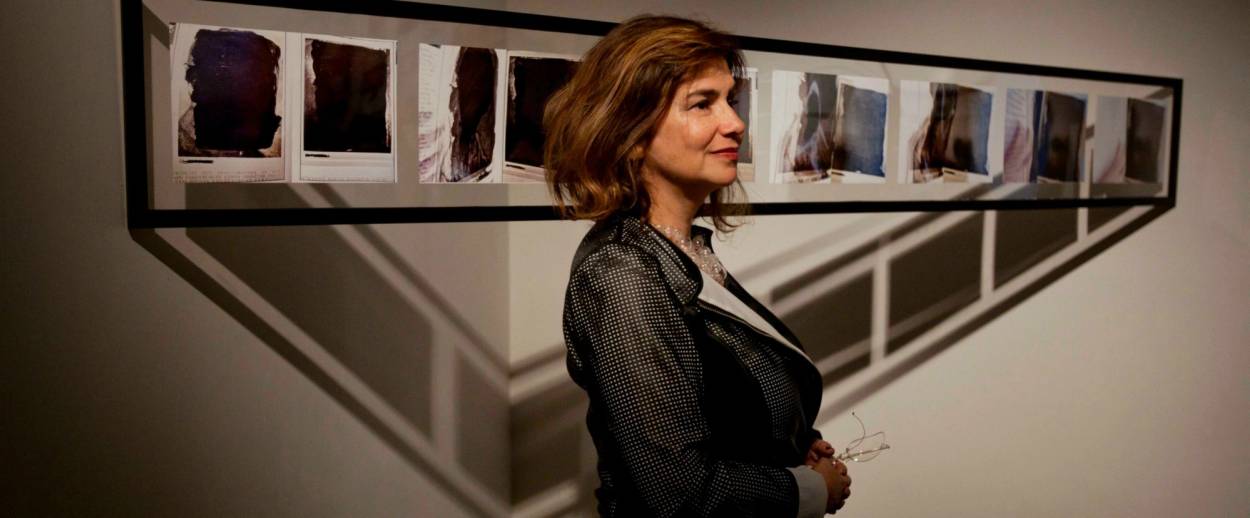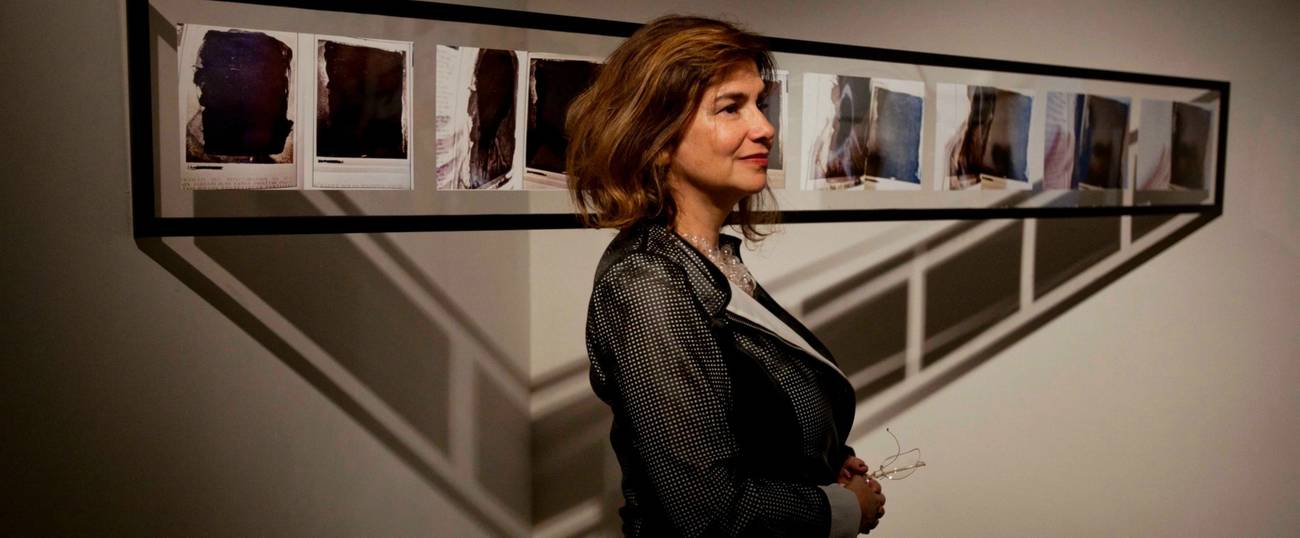In Memoriam: Svetlana Boym
The prolific scholar, writer, and artist, who taught Slavic and comparative literature at Harvard, died this week in Boston. Her texts continue to guide young thinkers.




Svetlana Boym—an inspiring professor of Slavic and Comparative Literature at Harvard University, an engaging and original thinker, a writer and artist, a fellow immigrant, a member of my dissertation committee, a kind person, one of the liveliest human beings I’ve met—died earlier this week, on August 5, in Boston. I write these words thinking of her and also about friends in the small circle of people around her in her final months—people who took care of her, engaged her in conversation, read her latest work, knew that she was dying. They, together with Svetlana’s parents who are now saddled with unimaginable grief of outliving their only child, are the mourners; I would be an interloper to count myself among them. I am part of a much larger circle of people Svetlana touched as her students, friends, colleagues, readers of her work. But there is much mourning to be done for us, too; as details of conversations, meals and coffees, of being mentored by her over the years come into sharper relief, I am especially grateful for the opportunity to mourn with the guidance of her texts.
The news of Svetlana’s death reached me in Amherst, Mass., teaching at the week-long Great Jewish Books program, at the Yiddish Book Center. I had just taught the first half of Amos Oz’s The Hill of Evil Counsel to the participants in the program, who are all high school juniors and seniors. Set in Jerusalem in 1946, the story dwells, in painstaking detail, on the brokenness of lives of Jewish immigrants to Mandate Palestine, on their arrival to a place that was permeated, as the story repeatedly reminds us, by the smell of garbage, and by tension just beneath the veneer of the “holy city.” The protagonists are haunted by nostalgias for their pasts elsewhere, crying at night in their alien mother tongues.
When the phone call about Svetlana’s passing came, I instinctively knew that, when teaching the second half of this story, I would also teach her work. She—brilliantly—sought out connections no one else did. Her death found me teaching what I had planned many months earlier; in bringing her work into this context of working with materials I happened to have, I cherish the unanticipated connection, the opportunity to teach my teacher’s work to my youngest students, observing how much of an impression it makes on them.
In her 2002 book The Future of Nostalgia, Svetlana lays out—yes, in discussing someone’s writing, the English language mercifully allows the switch to the present tense—an argument about two kinds of nostalgia. One type is restorative nostalgia, which “proposes to rebuild the lost home and patch up memory gaps;” the other, reflective nostalgia, “dwells […] in longing and loss, the imperfect process of remembrance.” Svetlana’s conception of restorative nostalgia is tinged with a warning against the danger lurking in the potential to reconstruct something that, by virtue of being lost, cannot actually be restored:
[Restorative] nostalgia characterizes national and nationalist revivals all over the world, which engage in the antimodern myth-making of history by means of return to national symbols and myths and, occasionally, through swapping conspiracy theories. Restorative nostalgia manifests itself in total reconstructions of monuments of the past, while reflective nostalgia lingers on ruins, the patina of time and history, in the dreams of another place and another time.
Svetlana’s words guided us—twenty-four students, four teaching assistants, a colleague observing the class, one teacher—through the rest of Oz’s story the morning following her death. Among them, I could see thoughts turning upside down inside people’s minds. Svetlana’s distinction between nostalgic people who dwell in the sadness of their loss and those who try to turn their fantasies about the lost past into reality in the present, brought to the foreground the dangers lurking everywhere in Oz’s story: that enacting a sexual fantasy from a broken past on the body of an other constitutes abuse of that body; that equating the Jerusalem of Jewish imagination and longing with the earthly city fails to properly contextualize one’s life within it; that when a battered people seek to restore to the present an ancient homeland where another people already live, it results in an endless cycle of violence. Oz was concerned with these questions when the story was published in Israel in the 1970s; Svetlana, whose work is acutely aware of the porous boundary between the personal and the political, made these concerns starkly visible—the result is a set of important insights for my students now.
In addition to her scholarly and literary writing, Svetlana was also an artist. One of my favorite art projects of hers is a series of photographs of fire hydrants, abandoned and overlooked by everyone else in the hubbub of cityscapes. Accompanying them were tragicomic captions—first-person statements of creatures ignored by the passersby, upset at peeing dogs, and overshadowed by seemingly more pristine works of art. They are “immigrant hydrants”—everyday objects humanized in their transience despite their fixed and unremarkable ubiquity. Somehow, I think, Svetlana’s hydrants tell us a lot about how she thought: enchanted with the urban, dissatisfied with the separation between art and everyday life, thriving in the freedom to see everything as if always a little bit off and a little bit strange.
In mourning Svetlana, I ask myself: what kind of nostalgic should one be? She made clear her distaste for restorative nostalgia, which “takes itself dead seriously.” On the other hand, she wrote appreciatively of reflective nostalgia’s potential to “be ironic and humorous,” to reveal that, “longing and critical thinking are not opposed to one another, as affective memories do not absolve one from compassion, judgment or critical reflection.” I realize that just now I switched to the past tense in my reference to her words—in recognition that, perhaps, she meant these words as much about her theory of nostalgia as she did about herself. To follow this, we do, unfortunately, now need the past tense to talk about Svetlana: in the lines I quoted, she absolved us of wanting to cling to the present when it has already receded into the past, and also made us comforted by the thought that in allowing memories to be about something that ended, we become neither less compassionate, nor less perceptive.
Svetlana’s writing is sprinkled with her longstanding interest in an array of Jewish topics, and in recent years she had taken an active interest in them—in part because she began looking anew at the intricacies of her own Soviet Jewish immigrant story. So, perhaps, she would have appreciated my musings about a traditional custom to study the Mishnah in memory of someone who died—and that perhaps my studying of her work together with “my brilliant students” (this is what Svetlana said about her own) could somehow qualify as a secular equivalent we both would appreciate. True, if one were really following the custom, one wouldn’t do it within a day of someone’s death, waiting for the learning to commence after the burial instead—but then, Svetlana was a woman who loved theorist Viktor Shklovsky’s idea of the knight’s jagged move across the chessboard as a pattern for both living and thinking. Her writing encourages us to be playful with rules, to make modifications, to skip over things, to live and think irreverently.
A couple of students approached me after encountering Svetlana’s work for the first time in class the day after her death and, visibly moved, said they were going to read her entire book. May Svetlana’s memory be a blessing, and her work—an inspiration.
Sasha Senderovich is an assistant professor in the Department of Germanic and Slavic Languages and Literatures, and the Program in Jewish Studies at the University of Colorado, Boulder.